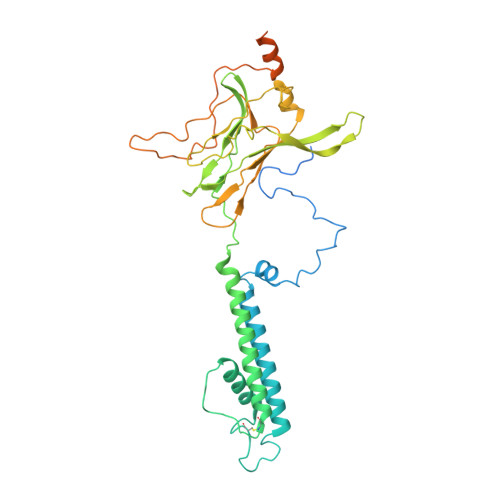Cryo-electron microscopy unveils unique structural features of the human Kir2.1 channel.
Fernandes, C.A.H., Zuniga, D., Fagnen, C., Kugler, V., Scala, R., Pehau-Arnaudet, G., Wagner, R., Perahia, D., Bendahhou, S., Venien-Bryan, C.(2022) Sci Adv 8: eabq8489-eabq8489
- PubMed: 36149965
- DOI: https://doi.org/10.1126/sciadv.abq8489
- Primary Citation of Related Structures:
7ZDZ - PubMed Abstract:
We present the first structure of the human Kir2.1 channel containing both transmembrane domain (TMD) and cytoplasmic domain (CTD). Kir2.1 channels are strongly inward-rectifying potassium channels that play a key role in maintaining resting membrane potential. Their gating is modulated by phosphatidylinositol 4,5-bisphosphate (PIP 2 ). Genetically inherited defects in Kir2.1 channels are responsible for several rare human diseases, including Andersen's syndrome. The structural analysis (cryo-electron microscopy), surface plasmon resonance, and electrophysiological experiments revealed a well-connected network of interactions between the PIP 2 -binding site and the G-loop through residues R312 and H221. In addition, molecular dynamics simulations and normal mode analysis showed the intrinsic tendency of the CTD to tether to the TMD and a movement of the secondary anionic binding site to the membrane even without PIP 2 . Our results revealed structural features unique to human Kir2.1 and provided insights into the connection between G-loop and gating and the pathological mechanisms associated with this channel.
Organizational Affiliation:
UMR 7590, CNRS, Muséum National d'Histoire Naturelle, IRD, Institut de Minéralogie, Physique des Matériaux et de Cosmochimie, IMPMC, Sorbonne Université, 75005 Paris, France.




















